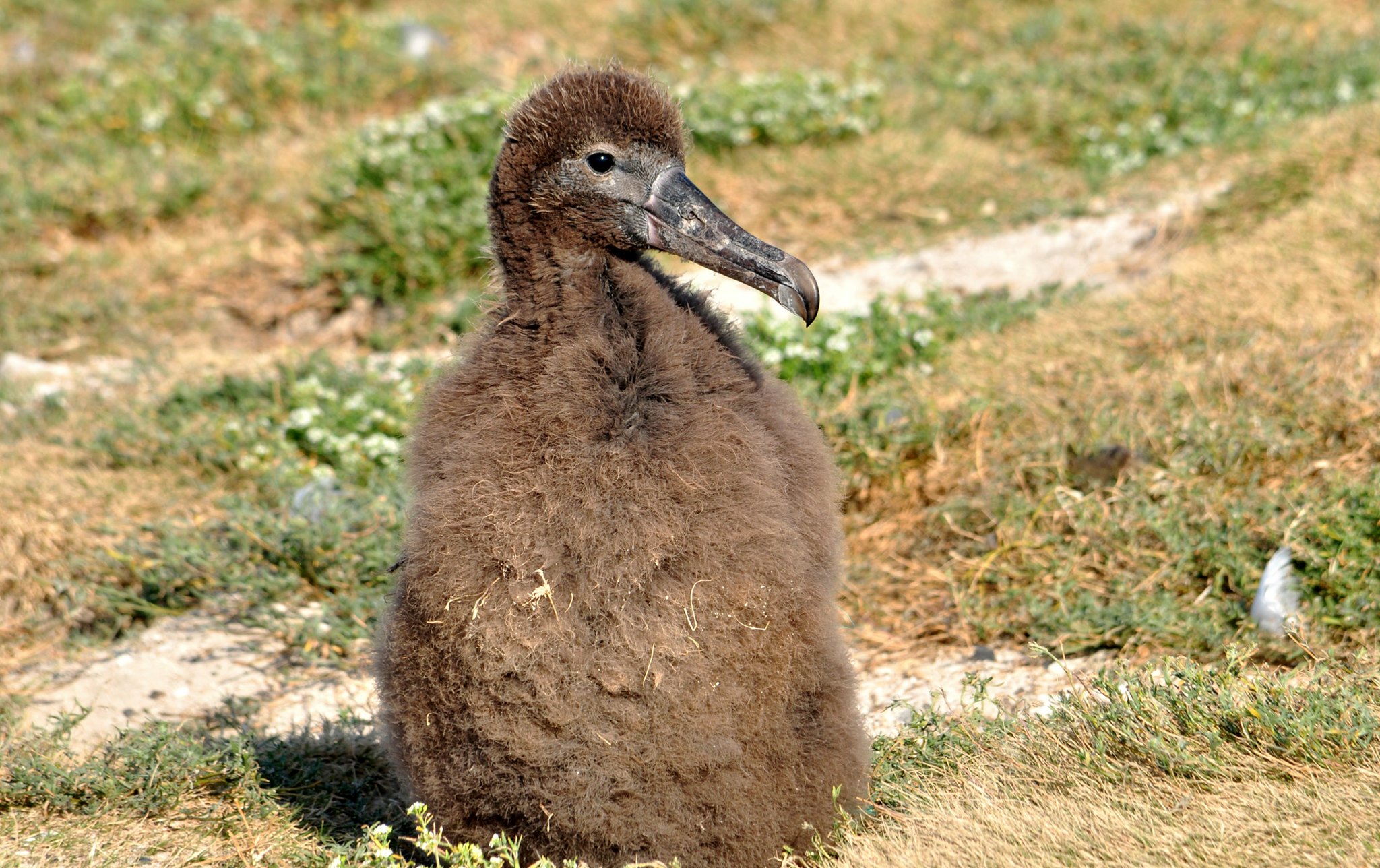SECOND UPDATE
The Short-tailed Albatross chick is reported to have successfully fledged (click here).
"The thrill of seeing this rare bird fly off into the rising sun was amplified by raising my hopes for last year’s chick, the first-ever known to have hatched on Sand Island, which also disappeared from the nest site earlier than expected in late May.” - Jonathan Plissner.

The chick has now left its nest, crossed the island on foot and was filmed on the beach and photographed in the water. Looks like George and Geraldine's second chick will fledge successfully. Go the to the Friends Of Midway Atoll NWR Facebook page for more photos and short video.
&&&&&&&&&&&&&&
The 2019/20 Short-tailed Albatross chick gets plastic Red AA09 and metal USGS Bird Banding Laboratory bands
George and Geraldine are a pair of globally Vulnerable Short-tailed Albatrosses Phoebastria albatrus that breeds on the USA’s Midway Atoll in the North-Western Hawaiian Islands. Last season they successfully reared their first chick to fledging. Now it seems they are well on their way to repeating the success, with their 2019/20 chick being banded on 28 April.

Geraldine (left) and George on Midway Atoll in 2018, photograph by Madalyn Riley
“The almost four-month-old Short-tailed Albatross chick is now the size of the nearby adult Laysan and Black-footed Albatrosses. Its legs are fully developed which allowed U.S. Fish and Wildlife Service staff to band the chick. It became the second successful chick banded on Midway Atoll National Wildlife Refuge from the parents George and Geraldine. The remote camera has revealed that the chick is still being fed by both parents, but the times between feeding visits will become longer until the time the chick will fledge, probably by the end of May - early June.”
The birds were seen back on Midway on 23 October last year, laid their egg on 28 October, which then hatched on 2 January.


Banding photographs by Narongkorn Thatsanangkun

Read more about George and Geraldine here.
John Cooper, ACAP Information Officer, 05 May 2020, updated 31 May 2020

 English
English  Français
Français  Español
Español 






